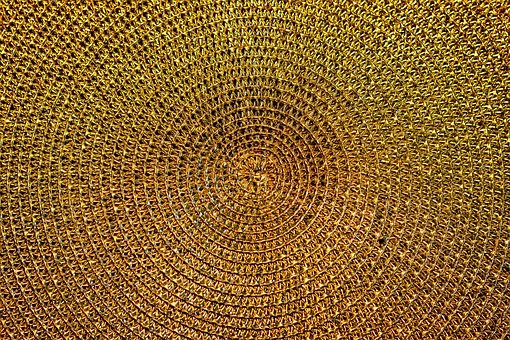As the three Kings from the Orient brought gold to infant Jesus, a question that often crops up in our mind is that who brought gold to Earth in the first place when it was formed? Why was Mackenna crazy for his gold?
Did it come from the skies? Who placed it in the Earth’s core then? An intriguing mystery for mankind since the ancient times might just be answered by researchers soon.
An international group of scientists from the University Of Granada (UGR) has shed light on the origin of the metal in their paper published in the Nature Communications. The research stated that gold originated from the deepest regions of the blue planet. Earth’s movement led to the metal’s concentration in the core.
José María González Jiménez, a Ramón y Cajal, a researcher from the Department of Mineralogy and Petrology from the University of Granada, along with researchers from universities across Chile, Australia and France, participated in the study concerning the origin of the much-coveted metal.
The group claims that Argentinean Patagonia under the South American continent, possesses the first registered gold, at a depth of 70 kilometers.
Was asteroid attack responsible for the formation of the much-desired metal?

A study by a team of scientists from Southwest Research Institute in Boulder, Colorado, in 2010, claimed that asteroids might be responsible for bringing gold to Earth.
Based on computer simulations, the study stated that small impacts by asteroids, 4.5 billion years ago might have given birth to the metal. The study also suggested that the biggest impact Earth received was by an asteroid, as big as Pluto and is thought to be up to 3,220 kilometers wide.
Keeping in mind the ‘It’ factor associated with the metal, the origin of gold matters.
“The search for gold has motivated migrations, expeditions and even wars, but its origin is one of the main questions in the field of mineral deposits genesis,” the UGR researcher José María González states.
The UGR researcher stated that reaching the Earth’s mantle is impossible for mankind. Nevertheless, elements from the mantle reach mankind due to volcanic eruptions. Xenoliths from the mantle reach the surface of the Earth post-volcanic eruptions.
The team conducted their study based on their thorough research of the Xenoliths. The team discovered native gold particles as thin as human hair and whose origin is the deep mantle in the Xenoliths.
Gold concentration in the region of the Deseado Massif at the Argentinean Patagonia is extremely high. The reason behind this is intriguing as well.
Going back to the days when Earth was just another planet in the solar system still in its initial stage of formation, Africa and South America were part of the same landmass. The ‘mantle plume’ coming from the core deep within, separated the two continents which led to the formation of a chemical reservoir which filled the mantle with metals. The constant generation of the metals led to the formation of gold deposits eventually.
“This time the process was caused by the movement of a tectonic plate under another, allowing the circulation of metal-rich fluids through the cracks, which precipitated the metals and concentrated them near the surface,” said José María González.
This new evidence might help in a more advanced research on mineral deposits under the Earth’s crust, which might reveal more mysteries hidden beneath its surface.
Source: International Business Times

































Leave a Comment
You must be logged in to post a comment.